In the wild, there’s a certain thrill to watching animals in their natural habitat, but sometimes that thrill can take a surprising—and sometimes dangerous—turn. While most creatures prefer to avoid conflict, there are some that will attack without any warning, making them both fascinating and formidable. Let’s explore the world of aggressive animals that are known for their wildly unpredictable nature.
1. Cape Buffalo
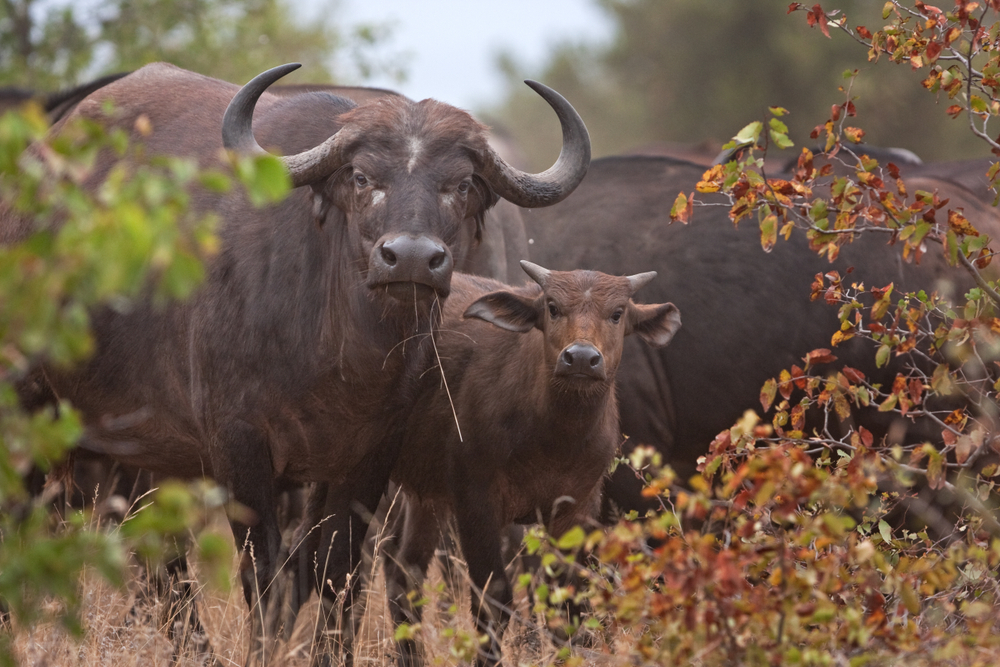
When you’re exploring the African savannah, it’s wise to keep a respectful distance from the Cape buffalo, often referred to as “Black Death” for a reason. These massive beasts, weighing up to a ton, are famously unpredictable and highly dangerous when provoked, or even when they’re not. Surprisingly, they’re not just a threat to predators like lions; humans are also on their radar. At a glance, they may look like simple, grazing creatures, but they have a short temper and a tendency to charge without hesitation. This isn’t just an idle threat—Cape buffalos are responsible for more fatalities in Africa than any other large animal. According to African Wildlife Report, the Cape buffalo, often called “Black Death,” is responsible for approximately 200 human deaths annually in Africa.
Even more impressive is their teamwork; if one is threatened, the herd will often come to its defense, which can result in a stampede of angry buffalos. You might think you can outrun one, but they can reach speeds up to 35 mph (56 km/h). Their unpredictable nature means they’re one of the few animals that will often attack without provocation, making them a creature you don’t want to cross paths with unexpectedly.
2. Box Jellyfish
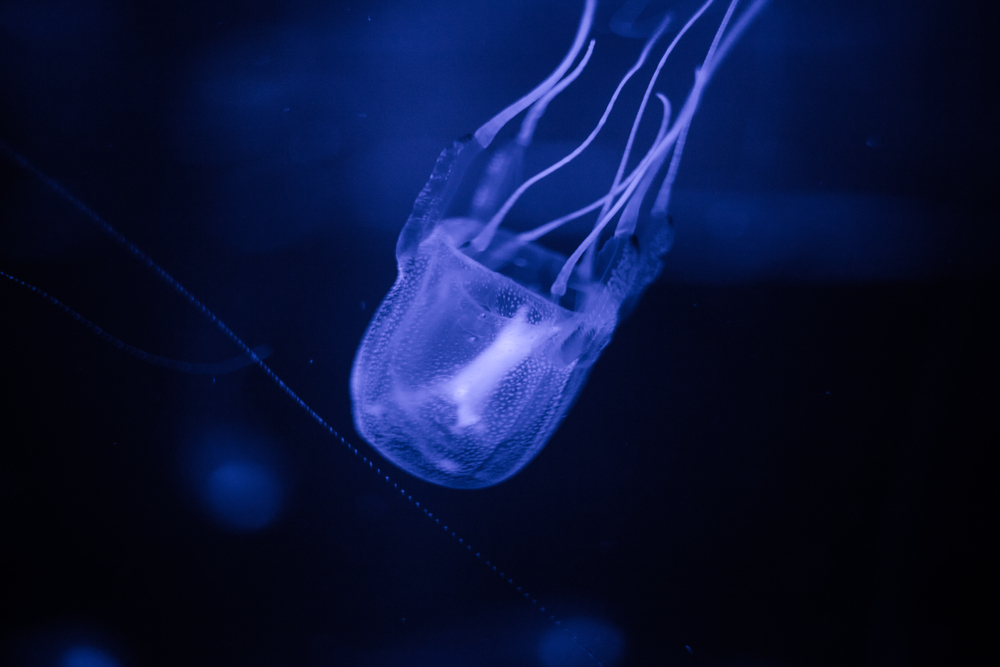
Imagine you’re swimming in the clear, warm waters of the tropics, and suddenly you feel an intense sting—chances are you’ve encountered a box jellyfish. Known as one of the deadliest creatures in the ocean, these jellyfish are responsible for numerous fatalities, thanks to their potent venom. They’re practically invisible in the water, making them even more dangerous as you might not see them coming. Their long tentacles can grow up to 10 feet and are loaded with toxins that attack the heart, nervous system, and skin cells. According to National Geographic, the box jellyfish is one of the most venomous creatures on Earth, with tentacles that can deliver toxins capable of causing heart failure within minutes.
The pain from a sting is excruciating, and if you’re stung, you might experience heart failure, paralysis, or even death before you reach the shore. To make matters worse, the sting marks can leave permanent scars, a reminder of your encounter with this nearly invisible predator. Because of their lethal nature, beaches in areas where box jellyfish are prevalent often have warning signs. These creatures don’t attack out of aggression, but rather as a defense mechanism, yet it’s an attack that comes without any warning whatsoever.
3. Brazilian Wandering Spider
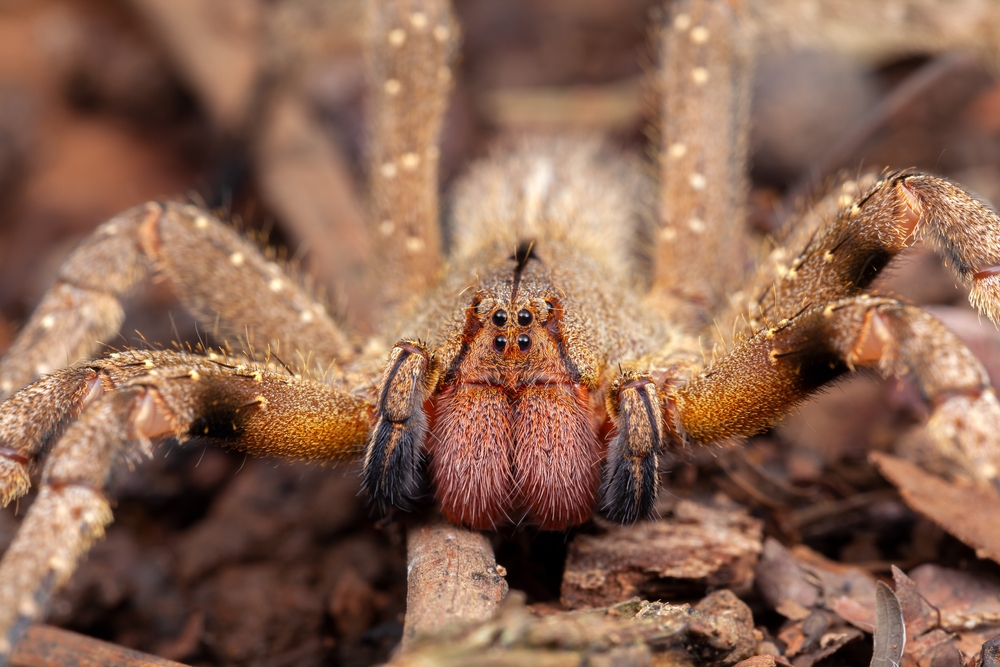
When you’re exploring the rainforests of South America, keep an eye out for the Brazilian wandering spider, a creature that’s as aggressive as it is venomous. Unlike most spiders that prefer to stay hidden, this particular arachnid is known for its tendency to wander, hence its name. It’s not just its wandering nature that makes it dangerous; this spider has a nasty reputation for delivering a painful and sometimes deadly bite. Its venom is a potent neurotoxin that can cause muscle paralysis and breathing problems, culminating in asphyxiation.
What’s even more intriguing is its defensive behavior. When threatened, the spider will raise its front legs and show off its large fangs, a clear warning to back off. However, if you don’t heed this warning, it will not hesitate to bite. Its aggressive nature and potent venom make it one of the most feared spiders on the planet. The Brazilian wandering spider doesn’t seek out humans, but if you unknowingly disturb one, it won’t shy away from a confrontation.
4. Honey Badger
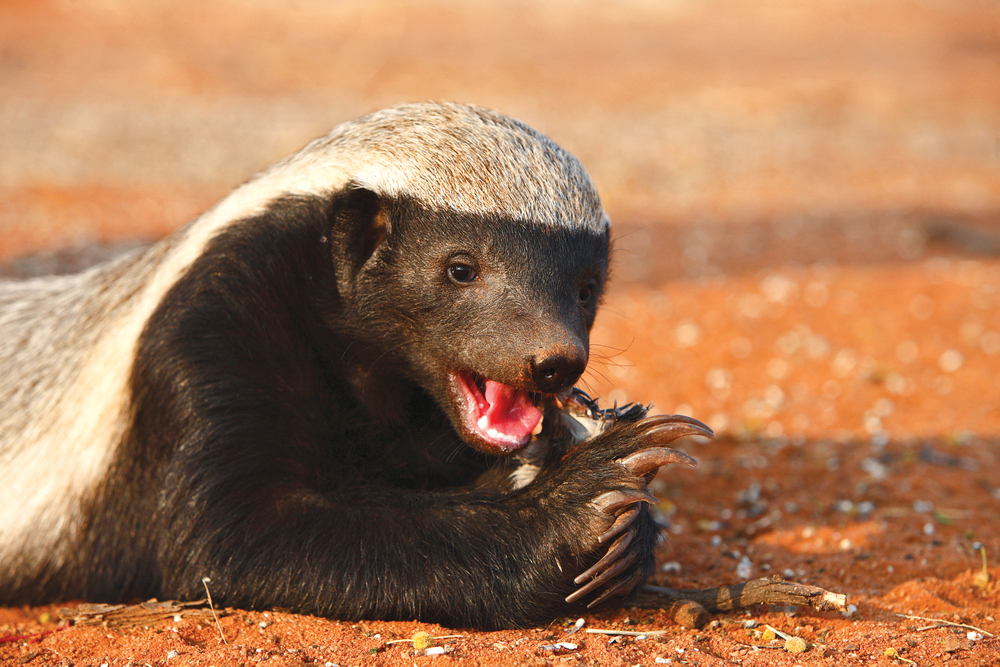
You wouldn’t expect an animal that weighs only 20 to 30 pounds to be one of the most fearless creatures on the planet, but the honey badger defies all expectations. Known for its tenacity and ferocity, this small mammal is fearless when it comes to defending itself. Despite its size, it has been known to take on larger predators like lions and leopards. Its thick skin is resistant to bites and stings, and its sharp claws and strong jaws make it a formidable opponent.
Honey badgers are not just defensive; they’re aggressive hunters as well, known to attack beehives for honey, hence their name, and take on venomous snakes. Their fearlessness is legendary, and their aggressive nature makes them a creature to steer clear of. Even when captured or cornered, a honey badger will not hesitate to fight back with everything it has. Their reputation for being relentless and fierce is well-earned, and their unpredictability makes them a force to be reckoned with.
5. Hippo
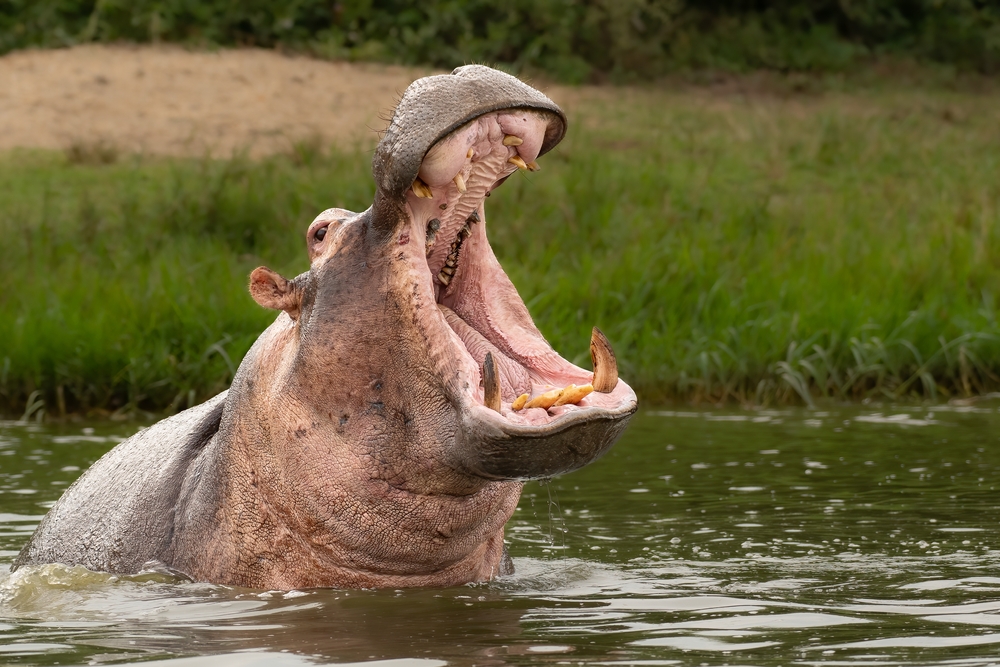
You might think a creature that spends most of its time lounging in water would be easygoing, but the hippo is anything but. Often considered one of the most dangerous animals in Africa, hippos are responsible for more human fatalities than most of the continent’s more well-known predators. Their deceptively docile appearance hides a fierce territorial instinct, and they will attack anything they perceive as a threat to their space. With the capability to run at speeds of 19 mph (30 km/h) on land, they can easily outrun a human, despite their bulky frame.
Their powerful jaws can snap a canoe in half, and their tusks can crush bones with ease. When you add their unpredictable temperament and territorial nature, it’s no wonder they’re so dangerous. The best advice for anyone encountering a hippo is to keep a significant distance, especially when they’re in the water, which they consider their domain. They might look like giant, water-loving creatures, but they won’t hesitate to charge and attack without warning if they feel threatened.
6. Bull Shark
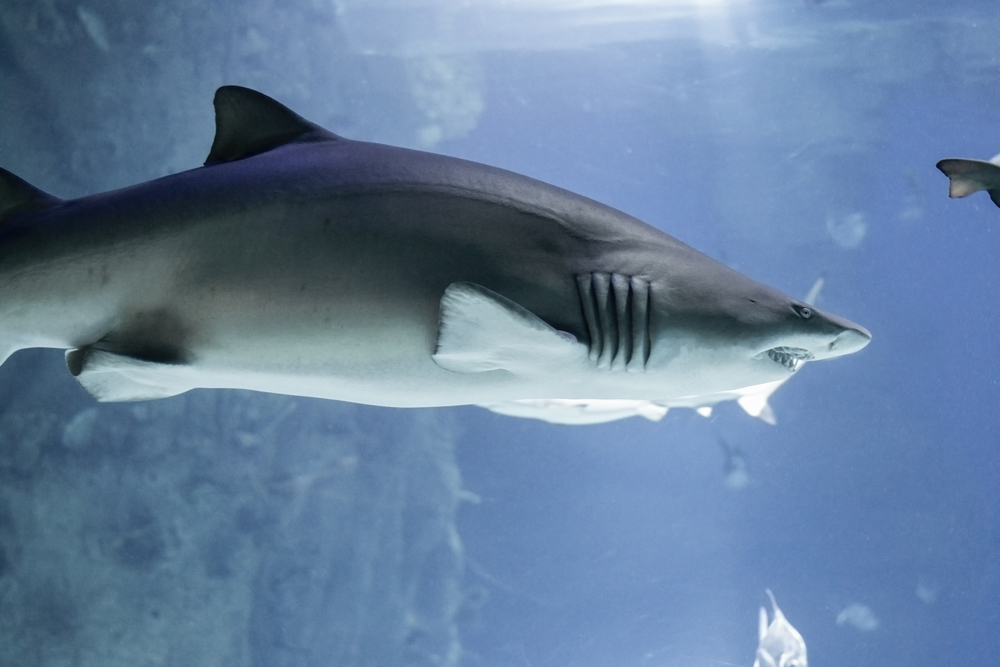
Venturing into murky waters where fresh meets salt, you might come across the bull shark, notorious for its aggressive behavior. Unlike other sharks that prefer the deep ocean, bull sharks are comfortable in both salt and freshwater, often found in rivers and estuaries. They’re known for a high testosterone level, which contributes to their aggressive nature. Bull sharks are opportunistic feeders and have been involved in more attacks on humans than other shark species due to their predilection for shallow waters.
Their unpredictability is heightened by their curiosity; they often “test bite” things to see if they’re edible. This behavior, combined with their aggressive tendencies, makes them particularly dangerous to humans. They have a robust build and can reach lengths of 11 feet, making them formidable predators. If you’re swimming in waters known to have bull sharks, it’s best to be on high alert, as they can appear and attack without warning, thanks to their comfortable range in diverse environments.
7. Cassowary
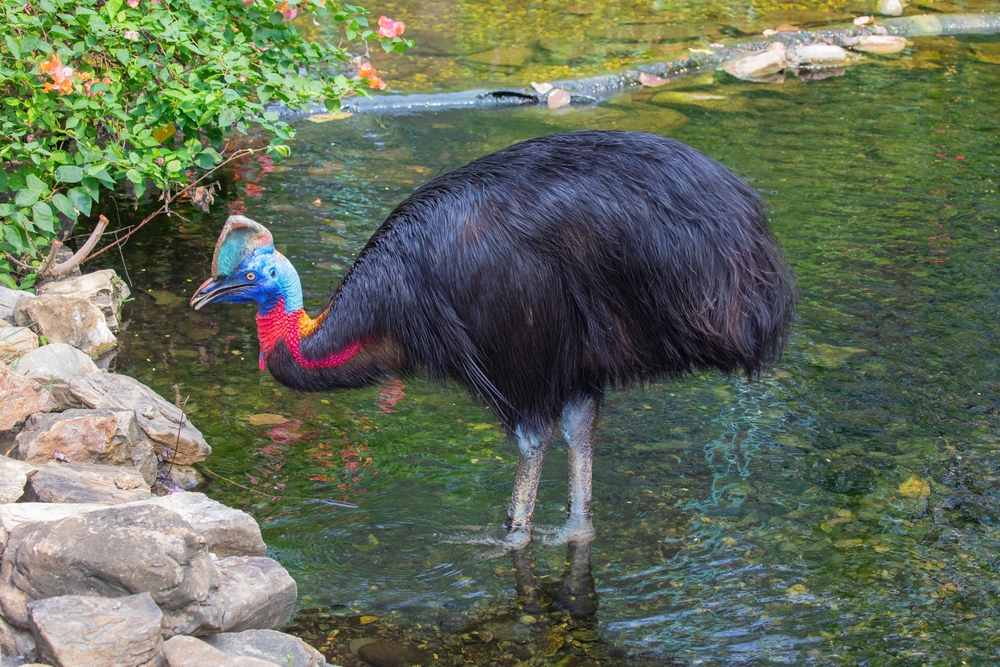
In the dense rainforests of Australia and New Guinea, you might cross paths with the cassowary, a bird that’s as beautiful as it is dangerous. Known as the most dangerous bird in the world, cassowaries are fiercely territorial and will defend their space aggressively. Despite being flightless, they can run at speeds of up to 31 mph (50 km/h) and jump up to 7 feet in the air. Their powerful legs are equipped with sharp claws, capable of delivering deadly kicks.
Cassowaries are generally shy and avoid confrontation, but when provoked or cornered, they can be lethal. They use their claws to slash and kick, a defense mechanism that has caused serious injuries and even fatalities. Their striking appearance, with vivid blue skin and a helmet-like casque on their head, might lure you in, but it’s important to admire them from a distance. The cassowary’s combination of speed, agility, and aggressiveness makes it a force to be reckoned with in the wild.
8. Polar Bear
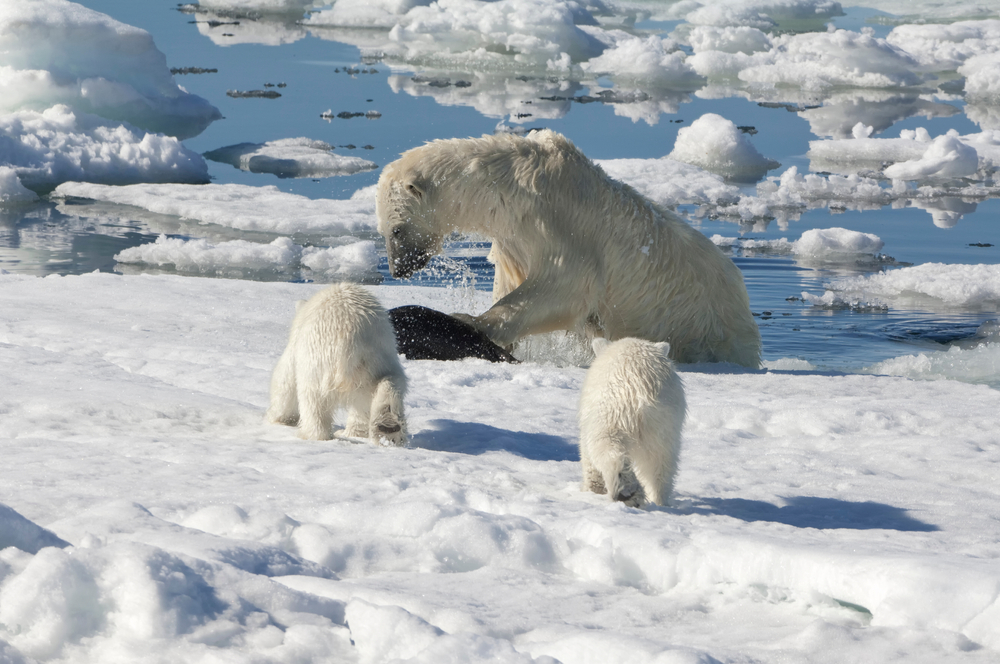
While they might look cuddly on nature documentaries, polar bears are amongst the most formidable predators in the Arctic. As the largest bear species, they rely heavily on their hunting prowess to survive in one of the planet’s harshest environments. Primarily preying on seals, a polar bear’s sense of smell is so acute that it can detect a seal nearly a mile away. Their massive paws help them swim long distances in icy waters, and they’re powerful enough to break through thick ice to reach their prey.
Polar bears are naturally curious and can be aggressive if they perceive anything as a potential food source. If you’re traveling in polar bear territory, it’s crucial to take every precaution to avoid encounters, as they have been known to attack humans without provocation. Their majestic appearance belies a fierce and formidable nature, one that commands respect—and a wide berth—from anyone who ventures into their realm. With dwindling ice caps, encounters are becoming more frequent, making them a serious concern for those living or traveling in the Arctic.
9. Komodo Dragon
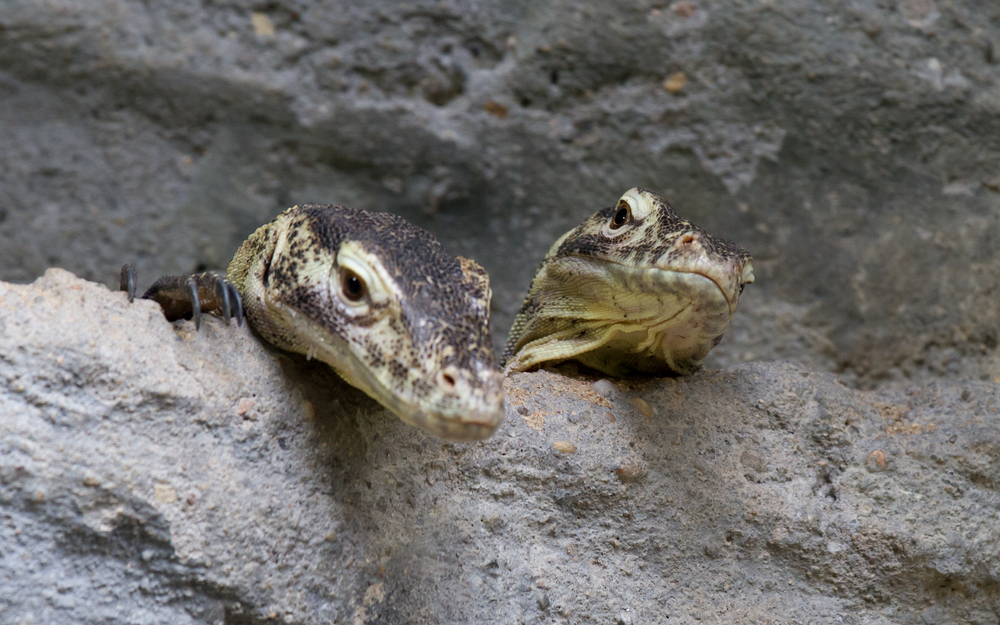
Roaming the Indonesian islands, the Komodo dragon stands as the largest living species of lizard, and it’s as dangerous as it is fascinating. These reptiles can grow up to 10 feet long and weigh over 150 pounds, making them formidable predators. They have a keen sense of smell, which helps them locate carrion from miles away. However, they’re not just scavengers; they’re also active hunters, capable of taking down large prey such as deer and even water buffalo.
What makes Komodo dragons particularly dangerous is their aggressive nature and toxic bite. Their saliva contains a mix of bacteria and venom that can lead to paralysis, blood clotting, and eventually death. If you’re exploring their native habitats, it’s crucial to keep your distance and avoid sudden movements, as they can perceive this as a threat or challenge. Their combination of power, agility, and venomous bite makes them a predator you wouldn’t want to encounter unexpectedly.
10. African Elephant
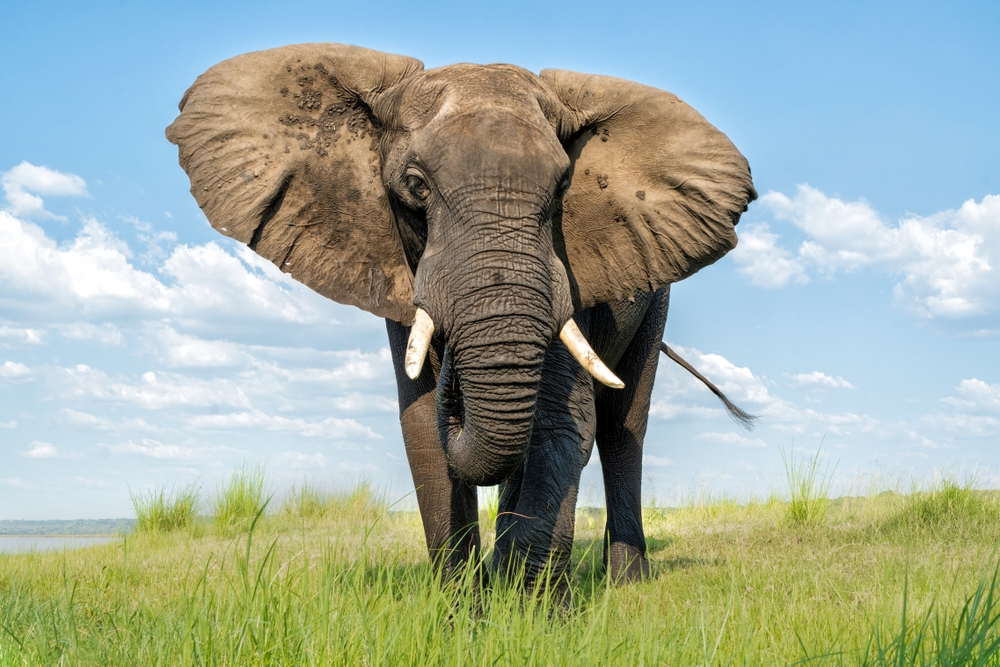
The African elephant is a magnificent creature, revered for its intelligence and social structure, but it can also be incredibly dangerous. Despite their herbivorous diet, elephants are known for their unpredictable behavior, particularly when stressed or threatened. Weighing up to 12,000 pounds, they have the strength to uproot trees and the speed to charge at nearly 25 mph (40 km/h). Their large ears, used for signaling danger and communication, can serve as a warning when they’re agitated or preparing to charge.
While they’re typically peaceful, elephants can become aggressive during musth, a period when males experience a surge in hormones that increases their aggression. Their protective nature, especially towards their young, can lead to unexpected attacks on humans who venture too close. It’s essential to respect their space and observe from a distance, as their sheer size and power make them a force to be reckoned with. Despite their gentle appearance, elephants demand respect and caution when encountered in the wild.
11. Wolverine
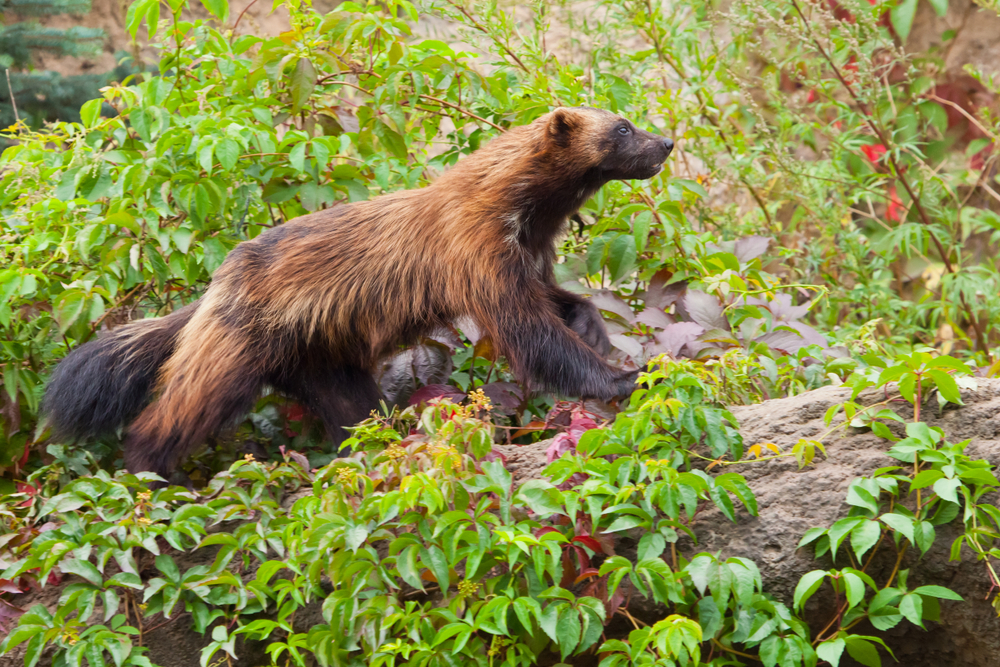
In the boreal forests and tundra of the Northern Hemisphere, the wolverine roams as a symbol of ferocity and endurance. Despite its small size compared to larger predators, this stocky carnivore is known for its aggressive behavior and remarkable strength. Wolverines have the ability to take down prey much larger than themselves, thanks to their powerful jaws and sharp claws. They’re solitary hunters and fiercely territorial, often covering large distances in search of food.
Wolverines are not afraid to confront larger predators, such as wolves or bears, if they feel threatened or if there’s food at stake. Their tenacity and strength allow them to survive in some of the harshest climates on Earth. While human encounters with wolverines are rare due to their remote habitats, it’s essential to be cautious if you find yourself in their territory. Their reputation as fearless fighters is well-deserved, making them one of the most aggressive animals you might encounter in the wild.
12. Lion
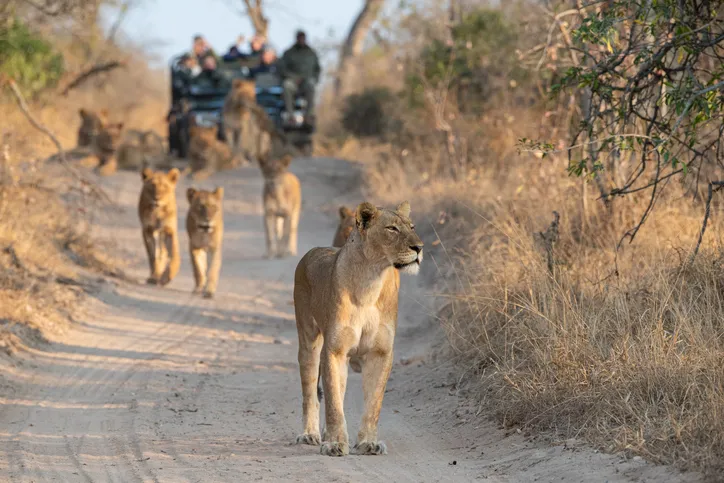
Famously dubbed the “king of the jungle,” lions are regal predators with a reputation for power and aggression. While they often hunt in prides, it’s the solitary males that can be particularly unpredictable and aggressive. Lions are apex predators, capable of taking down large prey such as buffalo and giraffes, but they also pose a threat to humans, especially if they feel their territory is being encroached upon. With powerful jaws and a burst speed of 50 mph (80 km/h), they’re formidable hunters.
Lions are known to attack humans or livestock if food sources are scarce, making them a significant threat to those living near their habitats. Their majestic appearance might be awe-inspiring, but it’s important to remember their potential for aggression. The best approach is always to maintain a safe distance and respect their space. Lions command both reverence and caution, reminding us why they’ve held their place as one of the world’s most iconic and feared predators.
13. Saltwater Crocodile
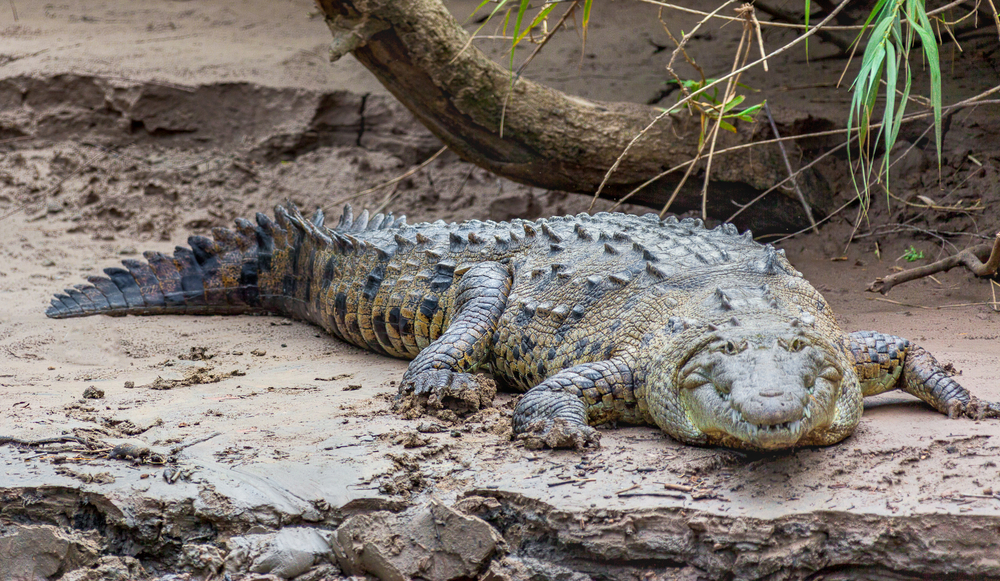
As the largest living reptile, the saltwater crocodile is a formidable predator in the waters of Southeast Asia and Northern Australia. These creatures can grow up to 23 feet in length and weigh over a ton, giving them the size advantage against almost any opponent. Their powerful jaws can exert a bite force of 3,700 psi, capable of crushing bones and holding onto prey with terrifying strength. Known for their ambush tactics, they lurk beneath the water’s surface, waiting for an unsuspecting animal—or human—to come within striking range.
What makes saltwater crocodiles particularly dangerous is their territorial nature; they will fiercely defend their domain against intruders. Despite their size, they can launch themselves out of the water with incredible speed, surprising their prey with little to no warning. For those living or traveling near their habitats, caution is paramount, as these reptiles have been known to attack boats and humans. Their blend of patience, power, and aggression makes them one of the most dangerous predators in their natural environment.
14. Hyena
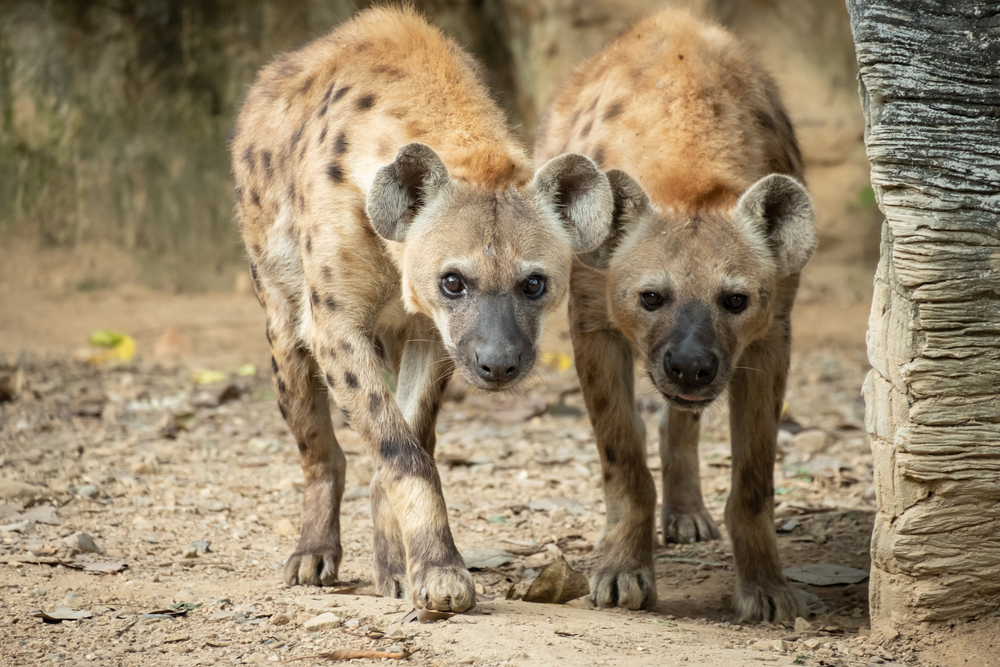
In the African savannas, hyenas are often misunderstood creatures, known more for their scavenging habits than their aggressive nature. Yet, hyenas are skilled hunters in their own right and can be quite dangerous when provoked or hungry. With powerful jaws capable of crushing bones and a pack mentality that rivals that of wolves, they’re formidable predators. Their eerie laughter, which serves as a communication tool within the pack, can be a chilling reminder of their presence in the wild.
Hyenas are opportunistic, often stealing kills from other predators, which can lead to aggressive confrontations. It’s this boldness that makes them dangerous, as they don’t shy away from conflict if it means securing a meal. While they’re not typically a threat to humans, they have been known to attack livestock and, in rare cases, people. Understanding their behavior is key to avoiding dangerous encounters, as hyenas are both resourceful and aggressive when it comes to survival.
